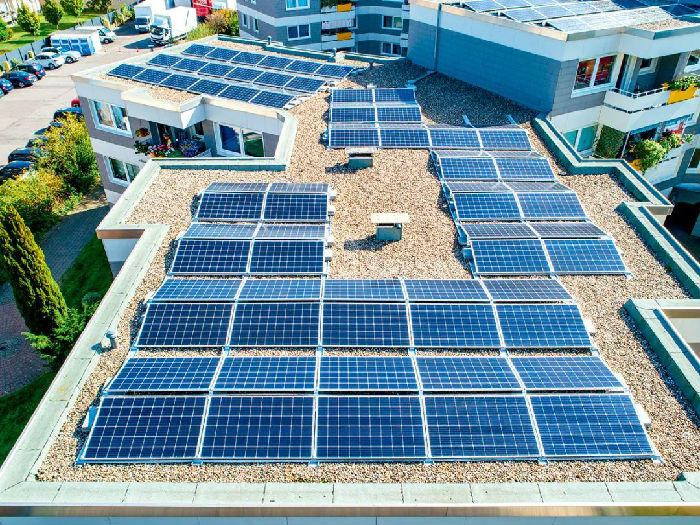


In 2020, the commitment to the "double carbon" target means that China's low carbon standard will shift from relatively lenient control of "carbon emission intensity per unit of output value" to a more stringent control of "absolute total" carbon emissions. Along with the upgrade of the low-carbon target, China has started to promote the change of the low-carbon development system from top to bottom, gradually constructing a system of total resource management and comprehensive conservation, a mechanism of paid use of resources and ecological compensation, carbon trading and carbon compensation, and other important measures.
1.Diversified exploration of low carbon cities
Since 2006, research and practice on low-carbon cities in China have mushroomed. The exploration at this stage has focused on the connotation, definition and criteria of low-carbon cities, and less on the relevance of regional and even national carbon reduction systems.
In the early stages of low-carbon city development, "low-carbon" was often used as a near-synonym for "ecological". The so-called low-carbon cities, due to the lack of clear indicators, often refer to urban areas that adopt certain ecological development principles and methods, such as occupying less arable land, developing more mudflats and saline lands, building green transportation systems, increasing the green space rate of cities, paying attention to the operation of urban microclimate, and promoting urban waste separation. Such qualitative standards are useful attempts and explorations for the construction of low-carbon cities in the early stage, but it is difficult to promote the in-depth development of low-carbon cities.
In practice, a number of domestic studies have interpreted and extended the concept of low-carbon cities, and built a low-carbon city standard with a combination of qualitative and quantitative evaluation based on the city's economy, industry, energy, life, resources, and policies. These standards provide a set of methods to measure the low-carbon development of cities, but they are only the optimization of the conceptual low-carbon "standards", with the problems of generalized objectives, strong subjectivity of indicators, and difficulties in operation.
A single indicator with carbon emission model as the core is a quantitative standard, which has the characteristics of specific target, clear calculation method, operability and objectivity. However, the main measurement of carbon emissions in this standard is from the production side, which needs to be "translated" to build a link with the urban consumption side. At present, there is still a lot of translation work to be deepened, and the guiding role and operation mechanism for the development of low-carbon cities need to be strengthened.
2.Integrate into the national system
The "double carbon" target has been set to promote the construction of an efficient national carbon reduction system in China. As an important sub-system of the carbon reduction project, low-carbon cities need to unify the current diverse standards and realize the interconnection of low-carbon cities with the national system.
Since the Paris Climate Summit, the United Nations Climate Change Conference has established a mechanism to monitor the implementation of national emissions reductions, requiring all parties to submit national greenhouse gas emissions reports based on the inventory every two years. The inventory classifies the sources of carbon emissions into five categories from the production side, including (1) energy, (2) industrial processes and product use, (3) agriculture, forestry and other land use, (4) waste, and (5) others, which is the measurement yardstick for the "dual carbon" strategy at the national level and should be the underlying structure for the construction of low carbon city standards. Based on the translation of this list, the low-carbon city standard should be extensively related to urban elements and build a "top and bottom" transmission mechanism that closely links the low-carbon city with the "dual carbon" strategy, so as to ensure the effective communication of "top and bottom" carbon information.

▲ Wind power fields in the outskirts of cities|pixabay
Integration into the ecological system to provide an information base for carbon trading
China needs to accelerate the establishment of a national system of paid trading of resources, with market mechanisms as the core means to promote the rational and optimal allocation of carbon resources and eliminate the drawbacks brought about by past administrative intervention.

▲ Urban Greenway|hellorf
The development of low-carbon cities is inevitably integrated into the low-carbon market mechanism, and the standards of low-carbon cities are used as a yardstick for scientific and accurate accounting of carbon emissions associated with each link, each subject, multiple scenarios and multi-level scales in urban planning and construction.
Integration into urban planning management system
In the context of " Carbon Peak & Carbon Neutrality ", carbon resources will be similar to land resources, both of which are highly relevant indicators for development, and both of which have the characteristics of scarcity and limited quantity. Low-carbon city standards should be incorporated into the urban planning and management system to achieve effective measurement of carbon emissions from various development and construction behaviors and strengthen the management and control of low-carbon city development.

▲ Rooftop photovoltaic facilities|pixabay

▲ Electric vehicle charging infrastructure|pixabay
At the level of general planning, carbon emission measurement standards based on the properties of land should be established as soon as possible to realize the scientific measurement of carbon emission of the overall development and construction behavior of the city. At the level of detailed control planning, carbon emission measurement standards associated with the development intensity, building height, green area ratio and other indicators should be established as soon as possible, so as to realize the fine measurement of carbon emission from the development of land parcels, and to realize the pricing of carbon emission from land parcels by combining with the carbon price in the carbon trading market.
Concluding remarks
The proposal of the "double carbon" target marks the shift of China's low carbon development to a new stage of carbon "absolute total control", and China will reshape the work objectives, working methods and paths of low carbon cities, and establish new low carbon city standards. The low-carbon city standard needs to provide an effective medium for establishing the "up-and-down" transmission mechanism, provide an information basis for establishing the city-level carbon trading mechanism, and fully integrate into China's urban planning and management system, becoming a fundamental project for the development of low-carbon cities in the new stage.
Source: <https://mp.weixin.qq.com/s/v5AK1j8opt7u-RXXZX96oA>
Translated by Hou Ying